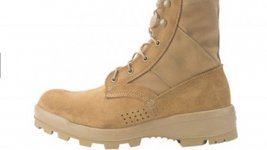Marines stand up rapid capabilities office
By: Mark Pomerleau, January 23, 2017
The Marine Corps is following in the footsteps of the Air Force and Army before it, though more subtly, in establishing a rapid capabilities office, C4ISRNET has learned.
Officially launched in December of 2016 and housed at the Warfighting Lab at Quantico, Virginia, the new office was created to “accelerate prototyping, demonstration, experimentation, and limited equipping of emerging capabilities.” The ultimate goal is increasing the operating force’s survivability and lethality as well as informing future force requirements and investment planning, officials said in a statement. “The Marine Corps RCO seeks to reduce the time between requirement identification and delivery of warfighting capabilities to the operating forces.”
Marine Corps Commandant Gen. Robert Neller “directed the establishment of the Marine Corps Rapid Capabilities Office (RCO) to accelerate the identification, assessment and development of emergent capabilities that will inform future requirements and enterprise investment planning for the acquisition process,” Masco Settles, the RCO’s deputy director, told C4ISRNET via email. The office’s initial mission set will include unmanned logistics transport platforms, sea-based expeditionary fires and ship-to-shore maneuver exploration and experimentation (S2ME2), Settles added.
The Army RCO, which was unveiled in a much more public fashion by outgoing secretary Eric Fanning in August, is currently focusing on delivering the ability to operate in electronic warfare-contested or GPS-denied environments, as well as trying to accelerate the Army’s capabilities in cyber.
In line with other similar efforts across the joint force, the Marine RCO will have a prototyping component. “The RCO will lead and build collaborative partnerships with a variety of organizations in the joint, naval, Marine Corps and commercial sectors to maximize resources and to provide venues to rapidly conduct operational assessments of relevant capability prototypes,” Settles said.
The RCO will draw upon several other Marine Corps and DoD components such as Marine Corps Systems Command, Department of Defense Joint Test and Evaluation Program, Defense Innovation Unit-Experimental, Strategic Capabilities Office, Defense Advanced Research Projects Agency, Marine Corps Operational Test and Evaluation Activity, Program Executive Office Land Systems and Marine Corps Special Operations Command.
Moreover, the RCO has been chartered in partnership with the Assistant Secretary of the Navy for Research, Development, Test & Evaluation and the Deputy Commandant for Combat Development and Integration to lead the S2ME2 task force. This task force will look to improve on how Naval forces conduct future amphibious operations in contested littoral operating environments.
Officials have previously expressed how unmanned technologies can assist in amphibious assault challenges, acting as the first wave off a ship.
The Marines are planning for a technical assessment in April 2017 at Marine Corps Base Camp Pendleton, California, followed by an operational assessment in the Fall of 2017 at Marine Corps Base Camp Lejeune, North Carolina, for the task force.
Settles noted the RCO will have acquisition and funding authorities leveraging strategic partnerships and legal authorities as to allow it to learn through rapid prototyping assessments, all to enhance equipping the force in a timely and efficient manner.





